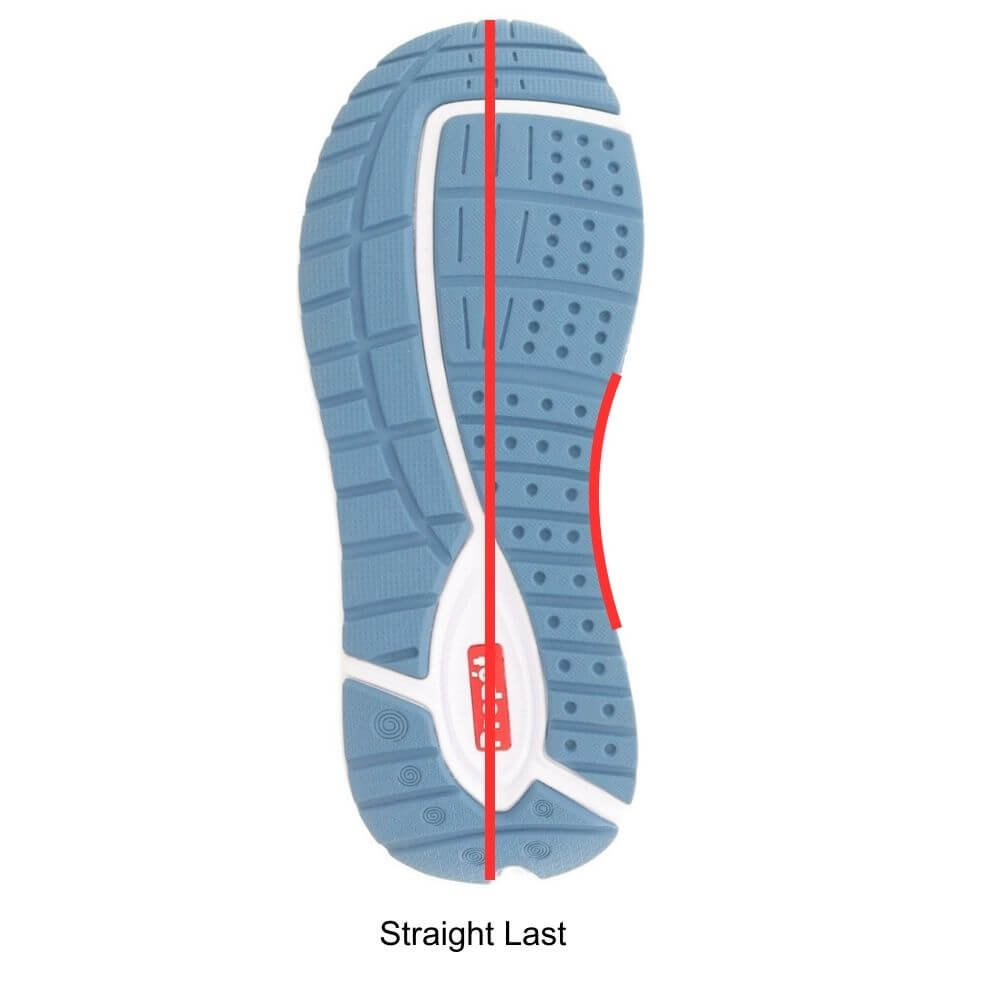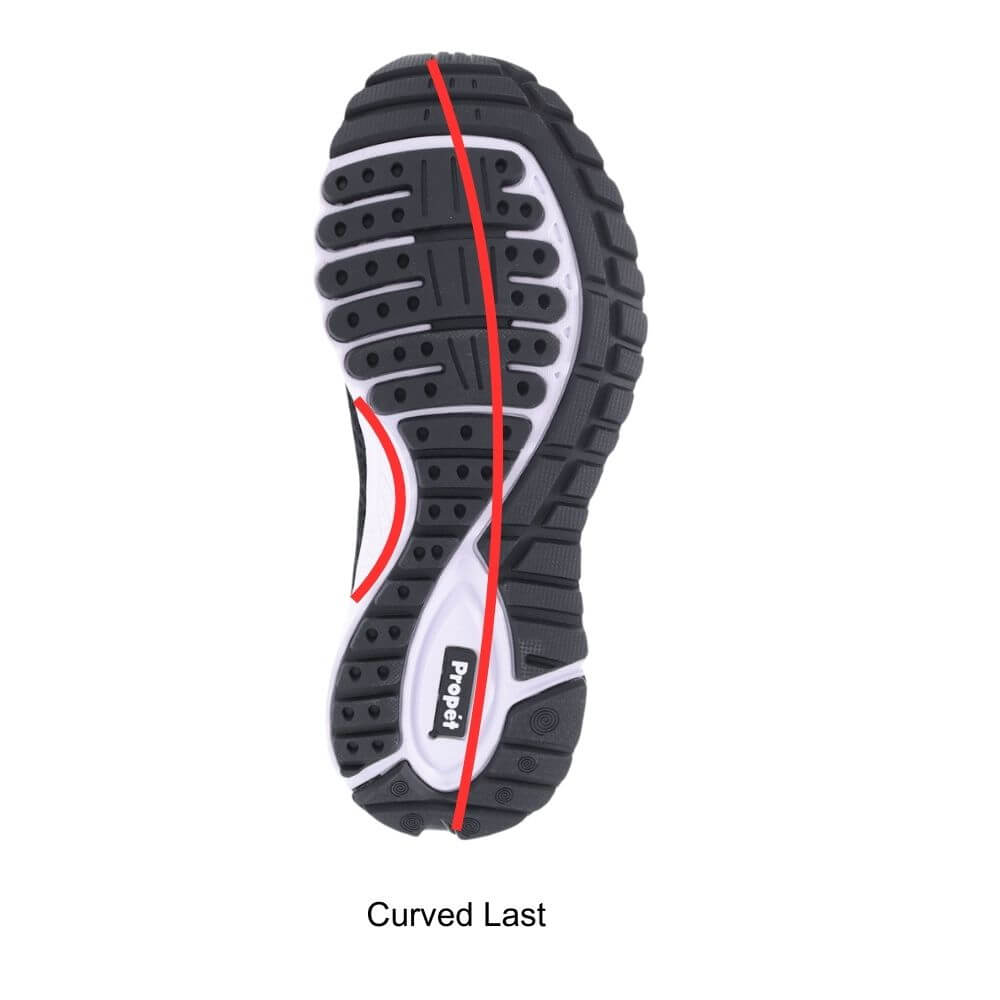free shipping desktop
Understanding Shoe Lasts & Shoe Fitting

Finding the perfect shoe fit can be a challenging task. You may have experienced the frustration of trying on shoes in your usual size, only to find that they feel too tight, too loose, or simply uncomfortable. This discrepancy in fit often stems from a critical factor in footwear manufacturing: the shoe last.
The last, a mold around which a shoe is constructed, is an important factor in determining the shoe's shape, size, and overall fit. Understanding how shoe lasts influence fitting and knowing what to look for in your shoes can help you achieve greater comfort and support, particularly if you have specific foot conditions.
In this article, we’ll break down the concept of shoe lasts and how they affect shoe fitting, why different brands and styles in the same size fit differently, and the importance of getting the right shoe for your specific foot type.
What is a Shoe Last and Why Does It Matter?
A shoe last is the three-dimensional form that a shoe is built around. Historically made from wood, lasts are now typically constructed from plastic or metal to ensure durability during the manufacturing process. The last dictates not just the length and width of the shoe, but also its overall shape, including the height of the instep, the curvature of the arch, and influences the angle of the toe box and heel.
Understanding the importance of the last helps explain why the same shoe size in different brands or models can fit differently. For example, one brand’s last may be designed with a narrow toe box, while another may favor a wider forefoot. These differences influence how snug or roomy a shoe feels on your foot. If you have bunions, for example, a narrow last could cause discomfort even if the shoe is your usual size.

In fact, the development of shoe lasts is often influenced by regional factors. European shoe manufacturers, for instance, might develop lasts that suit a different average foot shape than manufacturers from Asia or North America. This is why many people find that European-made shoes may fit narrower or longer compared to American brands, though this can vary between manufacturers and styles.
How Lasts Affect Shoe Size and Fit
Shoe lasts are the blueprint for size and fit. A shoe made on a different last, even from the same brand, can result in a different fit—even if it's marked the same size. This explains why a size 9 in one shoe may feel tighter or looser than a size 9 in another. The last influences the shoe's depth, width, and overall proportions, not just the length.
Let’s consider an athletic shoe versus a dress shoe. Athletic shoe lasts are often designed to accommodate wider foot spreads and extra cushioning, leading to more room in the toe box. In contrast, dress shoe lasts are often more tapered, designed to create a sleeker look but potentially causing discomfort for individuals with wider feet or conditions like hammer toes.

In some cases, the last design may not match your foot’s natural shape, leading to issues such as pressure points, poor arch support, or even pain in the ball of the foot. This is particularly important for individuals dealing with foot conditions like plantar fasciitis, where proper arch support is essential for alleviating discomfort.
The Importance of Proper Shoe Fitting Based on Last Design
For individuals with specific foot conditions like flat feet, bunions, or plantar fasciitis, choosing the right shoe that matches the shape of your foot is essential for proper fit and support. Shoes designed with lasts that accommodate these conditions will often feature wider toe boxes and deeper interior depths.
Proper fitting based on last design is essential not only for comfort but for preventing long-term foot issues. Wearing shoes that do not match your foot shape can exacerbate foot problems. For example, shoes with an overly curved last may not provide enough support for someone with flat feet, potentially leading to overpronation, which can cause stress on the knees and lower back. On the other hand, a straight-lasted shoe can offer better stability and support, helping to improve foot alignment and reduce strain.
Knowing the last design can also help in choosing orthotics. If you have custom orthotics, selecting shoes with removable insoles and a roomy last is important to accommodate the extra bulk of the orthotic while maintaining comfort and support.
Common Shoe Last Types
There are three common types of shoe lasts: straight, semi-curved, and curved. Each one is designed to accommodate different foot shapes and conditions, offering varying degrees of support and alignment. Here’s a breakdown of each:
Straight Last

A straight last is designed with minimal curvature and is often used for shoes that provide extra stability. This type of last is ideal for individuals with flat feet or those who tend to overpronate. Because the last is straight, it offers a wider, more stable base, helping to control motion and distribute weight evenly across the foot. Shoes with a straight last are commonly recommended for people with low arches or those seeking better alignment in their gait.
Semi-Curved Last

The semi-curved last offers a balance between stability and flexibility. It has a moderate curve that suits individuals with neutral foot types—those who do not overpronate or supinate (outward rolling of the foot). Semi-curved lasts are versatile, providing both structure and movement, making them suitable for a wide range of activities, from casual walking to more active pursuits. This type of last can also be a good choice for individuals with mild arch support needs, as it provides some contouring without sacrificing stability.
Curved Last

The curved last is the most flexible and is designed for individuals with high arches or supination tendencies. With its distinct curvature, this last encourages a more natural foot motion and is often found in athletic shoes, especially running shoes, where flexibility and a streamlined shape are important. The curved last helps to distribute pressure evenly across the foot, preventing excessive strain on the arches. While it offers less stability than a straight last, it’s ideal for people who require greater flexibility and a snug fit, especially during dynamic activities like running or jumping.
Tips for Finding the Right Shoe Fit
Finding the perfect shoe fit starts with knowing your foot shape and how shoe lasts affect the fit. Here are some practical tips:
- Always try on shoes at the end of the day when your feet are slightly swollen. This ensures a more accurate fit, particularly for individuals prone to swelling.
- Take note of the shoe last. Many brands provide details about the last used in their shoes, and selecting a shoe that closely matches the shape of your foot can enhance comfort. If you're unable to try on the shoe in person, observing the bottom of the shoe can give you an idea of its overall shape, which can help you assess whether it might suit your foot.
- Pay attention to the width of the shoe, not just the length. Shoes that are too narrow can cause conditions like bunions to worsen, while shoes that are too wide may lack the necessary support.
- If you wear orthotics, make sure the shoe has enough depth and removable insoles to accommodate them.
When shopping for orthopedic shoes, understanding how the last influences fit can help you make a more informed decision, ensuring that your footwear provides not only comfort but also the necessary support for your specific foot condition.
Suggested Shoe Last Shapes By Foot Condition
Shoe lasts play an important role in addressing various foot conditions because they determine the overall shape, fit, and structure of the shoe. Some foot conditions where shoe lasts are especially important include:
Flat Feet (Fallen Arches): A straight or semi-curved last can help offer more stability for individuals with flat feet, preventing overpronation (excessive inward rolling of the foot). The proper last can improve overall foot alignment and provide a better fit for those lacking a natural arch.
Bunions: People with bunions benefit from a last with a wider toe box. A wider last helps to reduce pressure on the bunion and provide extra space for toes to align naturally, reducing discomfort and irritation.
High Arches: Individuals with high arches need a last that accommodates the raised arch and contours to the middle part of the foot. A semi-curved last can offer a better fit for high arches, and shoes built on such lasts often have the necessary space to incorporate insoles with enhanced arch support to help avoid strain and pain.
Overpronation: For people who overpronate, a straight or semi-curved last can provide a wider base for improved stability and help reduce the inward rolling motion of the foot. This type of last works in conjunction with arch support features to promote better foot alignment and reduce strain from overpronation.
Hammertoes: A shoe last with a higher and more spacious toe box (extra depth or double depth) can relieve pressure on toes for those with hammertoes. This prevents rubbing and allows more freedom of movement, reducing discomfort.
Diabetic Feet: Diabetics often need shoes with deeper, wider lasts to reduce friction and pressure points. A roomy last that accommodates swelling and offers protection from irritation can help prevent ulcers and other complications.
Morton’s Neuroma: For individuals with Morton’s neuroma, a last with a wide forefoot is beneficial. A wider, more spacious last prevents compression of the forefoot, reducing the pressure that contributes to nerve pain.
By selecting shoes with appropriate lasts, people with these foot conditions can experience improved comfort, reduced pain, and better overall foot health.
Understanding the relationship between shoe lasts and shoe fitting is essential for finding the right footwear, especially if you have specific foot conditions. The shoe last plays a key role in shaping how the shoe fits, feels, and supports your foot, and being aware of these differences can prevent discomfort and long-term issues. Whether you're looking for everyday shoes, athletic footwear, or orthopedic solutions, focusing on how the shoe is built around the last will help you make the best choice for your foot health. Always prioritize shoes that accommodate your specific foot needs, and remember that no two lasts—or shoes—are created equal.
About author:
Bobbie J. Brown is a seasoned marketing content writer for Flow Feet, specializing in foot health with over 10 years of experience. She has written extensively on foot conditions, effective management strategies, and the benefits of orthopedic footwear. Connect with Bobbie via email at: bobbie@flowfeet.com.

